

The European Centre for Byzantine and Post-Byzantine Monuments was established in 1997. It is an Institution under private law, based in Thessaloniki (Greece) and supervised by the Minister of Culture and Sports. The activities of the Centre take place mainly in Greece, in the Middle East, the Balkan Peninsula and the Black Sea, where there are preserved monuments of Byzantine culture or monuments of Byzantine cultural influence.
The Centre’s aims include providing knowhow and developing international partnerships to support projects concerning the restoration, maintenance and promotion of Byzantine and Post-Byzantine Monuments at European and international level.
EKBMM has also been active in implementing European programmes for the documentation and digitization of cultural resources, the creation of databases, networking and the promotion of tourism through culture. These activities lead to benefits for local economic growth and community sustainability in South East Europe, the Black Sea and Eastern Mediterranean. EKBMM activities also include the creation and promotion of a network of digital applications that inform and raise public awareness on issues related to Byzantine culture.
Contact details:
Address: Leoforos Stratou #2, GR 54640, Thessaloniki
Phone: (+30) 2310 889830 Fax: (+30) 2310 853078
E-mail: mona@ekbmm.gr , info@ekbmm.gr
Website: http://www.ekbmm.gr/
Fb: https://www.facebook.com/Ekbmm/
Twitter: https://twitter.com/a_monuments

The Ephorate of Antiquities of the Cyclades is a Regional Service of the Ministry of Culture and Sport. It is based in Athens, its main area of responsibility being the territorial units of the Cyclades islands, namely: Andros, Milos, Thera, Kea - Kythnos, Mykonos, Naxos, Paros, Syros, Tinos.
According to Archaeological Law 3028/2002 “On the Protection of Antiquities and Cultural Heritage in general”, all Ephorates of Antiquities are responsible for the protection of cultural heritage regarding movable and immovable monuments and artefacts, and the intangible heritage belonging to the State. Specifically, the purpose of the Ephorate of Antiquities of the Cyclades is to protect and display antiquities found within its area of competence. The competence of the Ephorate extends to all matters relating to the protection of antiquities, such as the identification, investigation, research, recording, documentation and study, preservation, prevention, conservation, restoration and facilitation of public access and public information regarding cultural heritage. The Ephorate’s main activities, executed so as to ensure high standards and accountability, entail scientific research, study and publication related to antiquities, planning, management and execution of any archaeological project for the maintenance, repair and restoration of monuments, museums, collections, archaeological sites and their natural environment, promotion of antiquities, and their display and exhibition in museums, and general implementation of antiquities legislation in force. The Ephorate of Antiquities of Cyclades is a Regional Service of the Ministry of Culture and Sport. It is based in Athens with main area of responsibility the territorial units of Cyclades islands: Andros, Milos, Thira, Kea - Kythnos, Mykonos, Naxos, Paros, Syros, Tinos.
According to the Archaeological Law 3028/2002 “On the Protection of Antiquities and Cultural Heritage in general” all the Ephorates of Antiquities are responsible for the protection of cultural heritage regarding movable and immovable monuments and artefacts and the intangible heritage, belonging to the State. Specifically, the purpose of the Ephorate of Antiquities of Cyclades is to protect and display the antiquities that are found within its area of competence. The competence of the Ephorate extends to all matters relating to the protection of antiquities such as the identification, investigation, research, recording, documentation and study, preservation, prevention, conservation, restoration and facilitation of public access and public information regarding the cultural heritage. The scientific research, study and publication of antiquities, the planning, management and execution of any archaeological project for the maintenance, repair and restoration of monuments, museums, collections, archaeological sites and their natural environment, the promotion of antiquities and their display and exhibition in museums and the general implementation of the antiquities legislation in force are Ephorate’s main activities which are executed with self-esteem and accountability.
Contact details:
Address: Epaminondas 10, 105 55, Athens
Phone: (+30) 2103310966
E-mail: efakyk@culture.gr
Fb: https://www.facebook.com/efakyk/

The Municipality of Thera is an organic part of the Region of the South Aegean (it includes the Cyclades and the Dodecanese) and the Decentralised Administration of the Aegean based in Piraeus (Athens). The Municipalities of Thera, Ios, Sikinos, Folegandros and Anafi make up the Thera Regional Unit.
Based on the “Kallikratis Plan” (Law 3852/2010) the Municipality of Thera comprises the Municipal Units of Thera and Oia, including the historic communities of the island cluster of Santorini and Therasia, namely, Emporio, Episkopi Gonias (Kamari – Mesa Gonia), Fira, Karterados, Messaria, Akrotiri, Vothonas, Vourvoulos, Exo Gonia, Imerovigli, Megalochori, Pirgos, Therasia, Oia and the uninhabited islands of Nea Kameni, Palaia Kameni, Aspronisi and Christiana.
The total land area is 90.69 km2 (34.990mi2) with 15,550 people residing in the Municipality of Thera, according to the 2011census.
Contact details:
Address: Dekigala #40c, Thera, GR 847 00, Santorini, Greece
Phone: (+30) 2286 360100
E-mail: dimarxos@thira.gov.gr.
Website: https://www.thira.gr/
Fb: https://www.facebook.com/santorinimunicipality/
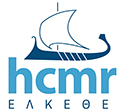
The Hellenic Centre for Marine Research (HCMR) is a governmental research organisation operating under the supervision of the General Secretariat for Research and Technology (GSRT) of the Ministry of Development & Investments. HCMR comprises three Research Institutes, namely, the Institute of Oceanography (IO), the Institute of Marine Biology, Biotechnology and Aquaculture (IMBBC), and the Institute of Marine Biological Resources and Inland Waters (IMBRIW) & the Institute of Oceanography (IO).
Through its active involvement in various international and European projects (e.g., PERSEUS, SESAME, PEGASO, MESMA, POSBEMED), and numerous scientific publications, HCMR has a proven track record of competence in all fields of marine research. HCMR is also active in several international large-scale initiatives for Marine Habitat/Seabed mapping (e.g., EMODNET, EUSEAMAP II, MEDISEH, COCONET), while, at the national level, it maintains a leading role in implementing marine-related European Directives and Regulations, e.g., the Habitats Directive, the Water Framework Directive (WFD), the Marine Strategy Framework Directive (MSFD), Marine Spatial Planning (MSP), Mediterranean Fisheries Regulation, etc. HCMR has a long experience in compiling spatial databases and maps, as well as carrying out inventories and data compilation based on the principle of integrated ecosystem-based management.
Within the MoNa Project, HCMR aims to contribute to the promotion and enhancement of the conservation of the marine environment in three case study areas, namely, those of Nessebar (Bulgaria), Butrint (Albania) and Santorini Isl. (Greece).
Contact details:
Address: 46.7 km Athens Sounio Ave., P.O. Box 712, P.C. GR19013 Anavyssos, Greece
Phone: (+30) 2291076460 Fax: (+30) 2291076323
E-mail: iosecretariat@hcmr.gr, msal@hcmr.gr
Website: www.hcmr.gr
Fb: https://el-gr.facebook.com/Hellenic-Centre-for-Marine-Research-HCMR-249883285054329/
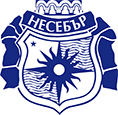
The Municipality of Nessebar, total area: 423 km2, is in southeastern Bulgaria, on the Black Sea coast. It comprises 14 residential complexes and the Sunny Beach resort, i.e., 3 towns (Nessebar, Obzor, St. Vlas) and 11 villages ((Ravda, Giliovtsa, Orizare, Tunkovo, Kosharitsa, Banya, Panitsovo, Rakovsko, Priseltsi, Emona, Koznitsa) with a total population of about 21,000.
Nessebar Municipality is a world tourist destination due to its location, cultural heritage, and historical significance. The resorts are spread along the Black Sea coast on beautiful bays with wide sandy golden beaches and crystal clear sea water, where the sea bottom is slowly increasing in depth, making the Municipality popular to tourists and a safe destination for family holidays. The temperature is always two or three degrees higher than in the resorts along the northern Black Sea coast. Additionally, in 1983, Nessebar was declared a “Museum City” and a World Heritage Site by UNESCO. The town of Nessebar is an attractive place with a rich historical and architectural heritage, a romantic atmosphere, and a wide range of opportunities for entertainment and accommodation (over 250,000 beds).
Every year numerous tourists arrive at the Municipality of Nessebar, which can get really crowded during summer. There are good bus connections and other public transport means with many destinations all over the country. There is also a railway station and two large airports, at Varna and Bourgas, at 130 km and 30 km from Sunny Beach, respectively.
Contact details:
Address: 8230, Nesebar, #10 "Edelweiss" Str./ul. "Edelvajs", Bulgaria
Phone: (+359) 554 29370
E-mail: mer@nesebar.bg
Website: nessebarinfo.com
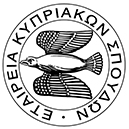
Τhe Society of Cypriot Studies is one of the oldest active non-governmental and non-profitable associations in Cyprus. It was founded in 1936. The Society is housed in a medieval monastery of the Old Archbishopric of Cyprus, offered by Archbishops Makarios II (1947-1950) and Makarios III (1950-1977).
The basic objectives of the Society are the collection, preservation, study and publication a) of historical material related to all periods of Cypriot History; b) of linguistic material referring to the history and evolution of the Cypriot dialect; c) of folklore material from all periods of Cypriot history, and d) the collection of works of Cypriot folk art and their preservation, study and promotion.
The main activities of the Society are: 1) the annual publication of a scientific yearbook titled “Cypriot Studies”; 2) independent publications referring to aspects of Cypriot culture; 3) the operation of Cyprus Folk Art Museum (1937); 4) the operation of a library mainly focused on Cyprological subject matter; 5) the organisation of the International Cyprological Congresses; 6) scientific activity, such as organising lectures, exhibitions, symposia, projects and educational programmes concerning subjects related to Cyprus.
Contact details:
Address: P.O. Box 21436, 1508 Nicosia, Cyprus
Phone: (+357) 22 432578
E-mail: cypriotstudies@gmail.com
Website: www.cypriotstudies.org
Fb: https://www.facebook.com/CypriotStudies
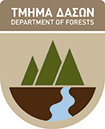
The Department of Forests was founded in 1879 and comes under the Ministry of Agriculture, Rural Development, and the Environment. It is the competent authority for managing national forest land and for the implementation of national forest legislation and policy. Within this framework, DF is engaged in forest fire protection, management, landscape and nature conservation, reforestation activities and management of state forests that are part of the Natura 2000 network. Additionally, DF has long experience in implementing various co-funded European projects, including LIFE and non-LIFE projects, such as EEA Grants and Interreg Projects.
MISSION (compulsory)
The Department of Forests promotes sustainable forest management and improves urban green areas through:
· development and implementation of Forest Policy and Legislation;
· protection of forests from fires, climate change and other factors;
· enhancement of forest protection operations;
· protection of biodiversity;
· enhancement of forest recreation, and
· production of forest products.
RESPONSIBILITIES (optional)
The main responsibilities of the Department of Forests include:
Contact details:
Address: Louki Akrita #26, PC 1453 Nicosia – Cyprus
Phone: (+357) 22 805511, Fax: (+357) 22 805542
E-mail: director@fd.moa.gov.cy
Website: http://www.moa.gov.cy/moa/fd/fd.nsf/index_gr/index_gr?opendocument
Fb: https://www.facebook.com/DepartmentOfForests/
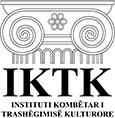
The National Institute for Cultural Heritage (Instituti Kombëtar i Trashëgimisë Kulturore, IKTK), is the national scientific government entity of Albania involved in research, protection, preservation, conservation, restoration, revitalisation and promotion of tangible cultural heritage.
The Institute was founded in 1965. As a national entity, it comes under the umbrella of the Ministry of Culture. Its task is to establish national criteria and to enable and enforce legislation with regards to immovable cultural heritage (cultural monuments and sites); furthermore, the Institute is active in the field of preventive and rescue archaeology. IKTK extends its competence in the field of preventive and rescue underwater archaeology within the Republic of Albania, pursuant to the national law on cultural heritage and museums.
To achieve its aims, IKTK monitors and coordinates the work of six regional directorates of cultural heritage in the Albanian territory. It strictly cooperates with local governments and other local, national, and international scientific, cultural, and religious entities.
The main technical departments of the Institute are the Department of Ancient and Medieval Architecture, the Department of Historic Centres, Vernacular Architecture and Landscape, the Department of Works of Art, the Technical Secretariat of the National Council for Cultural Heritage and the Regional Centre for Conservation and Restoration of South East Europe (RCCREJ). The RCCREJ drafts and implements capacity building programmes for young professionals of SEE in the field of tangible cultural heritage, under the auspices of UNESCO. The periodical "Monumentet" is the official publication of IKTK and presents the scientific work and research undertaken concerning tangible cultural heritage in Albania.
Contact details:
National Institute of Cultural Heritage / Instituti Kombëtar i Trashëgimisë Kulturore - IKTKGeneral Director: Arta Dollani
General Director: Arta Dollani
Address: Rruga Aleksandër Moisiu #76, 1001 Tirana, Albania
Phone: (+355) 44504152, (+355) 42455706
E-mail: info@iktk.gov.al
Website: http://www.iktk.gov.al
Fb: Instituti Kombëtar i Trashëgimisë Kulturore https://www.facebook.com/Imk.gov.al/
Twitter: https://twitter.com/imk_albania?lang=el
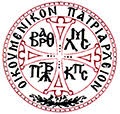
«The Ecumenical Patriarchate of Constantinople is the Mother Church of Eastern Orthodox Churches and one of the most active centres of present-day ecumenical movement. Seated at the Archbishopric of Constantinople, the ecclesiastical competence of the Patriarchate, according to the Holy Canon, extends over its provinces in Turkey, Europe, Asia, America, and Oceania.
The Patriarchate is administered by the Ecumenical Patriarch and the twelve-member Holy Synod, which meets every month and is chaired by his Most Divine All-Holiness. The See of the Supreme Throne Church of Orthodoxy is at Phanar (Fener) in Constantinople and includes the Patriarchal Church of St. George and the Patriarchal Residence.
His Most Divine All-Holiness Archbishop of Constantinople-New Rome and Ecumenical Patriarch, Bartholomew I, is the 270th successor of Saint Andrew, the Founder of the Church of Constantinople and he has been at the helm of the Church for almost 30 years. Since he was elected Ecumenical Patriarch on 22 October 1991, the Patriarch has been working to strengthen Pan-Orthodox unity and cooperation. To this end, he has established the Greater Regional Holy and Sacred Synod and has visited all participants and, also, invited and welcomed them to his Holy See at Phanar (Fener). The Patriarch called the Holy and Sacred Synod to Crete, in June 2016, and chaired its meetings. In the context of the canonical privileges of the Mother Church of Constantinople and the responsibilities of the Ecumenical Patriarch, the right of Autocephaly was extended to the Churches of the Czech Republic and Slovakia in 1998, and of Ukraine in 2019. Furthermore, His All-Holiness promotes the ecumenical dialogue with other Christian Churches and Denominations, he visits their seats, and participates in inter-Christian conferences and anniversary events.
Envisaging a world that will operate as a true ‘house’ of man, in an era when the increasing threat against the natural environment is fraught with the risk of a global ecological disaster, Patriarch Bartholomew I has become known as the ”green Patriarch” for bringing environmental conservation to the top of his term-in-office agenda, underlying the spiritual and theological aspects of ecological issues.
Contact details:
Address: Rum Patrikliği, Dr. Sadık Ahmet Cad. No. 19, 34083 Fatih-İstanbul, Türkiye.
Phone: (+90) (212) 531.9670-6
E-mail: patriarchate@ec-patr.org
Website: http://www.ec-patr.org

Τhe Greek Planners’ Association (SEPOX) was founded in 1981. As a scientific body composed of members acting in various roles (academics, researchers, public officials, scholars, etc.) within modern Greek society, SEPOX makes a substantial contribution to the research and development of policies and actions for cities, rural areas and areas of specific features, highlighting the importance of an interdisciplinary approach to spatial planning. The Association plays a social and advisory role by participating in the official bodies responsible for the formulation of spatial policies (a member of the National Spatial Council, a participant in various committees of the Ministry responsible for spatial planning).
Among others, the goals of the Association include:
a) Cooperation and exchange of information with national and international associations and organisations on issues of common interest;
b) Promotion of the concept of integrated spatial planning with respect to the principles of sustainable development;
c) Formulation and presentation of substantiated proposals and positions on important spatial planning issues, as well as on issues concerning environmental protection and management related to the formulation and implementation of spatial planning policies.
The contribution of SEPOX to MoNa Project
According to its goals, SEPOX aims to protect the natural and cultural environment under increasing pressure, through spatial planning and because of its capacity to provide opportunities for sound economic development and fair societies. Association members have extensive experience in preserving and restoring natural and cultural heritage through their activities in research, studies, programmes and spatial planning actions.
Given that the expertise and policies of SEPOX are in line with the scope and objectives of MoNa project, the Association is particularly interested in supporting the successful completion of the project.
The Association’s contribution can be summarised as follows:
• Initiating the debate on the concurrent assessment of cultural and natural landscapes;
• Producing tangible results from the landscape management project;
• Contributing towards an integrated approach to both general issues and case studies;
• Disseminating the project achievements in the widest possible way.
Contact details:
Address: “Ghini” Building, National Technical University of Athens, Patision #42, GR10682, GREECE
Phone: (+90) (212) 531.9670-6
E-mail: sepox1981@sepox.gr
Website: https://sepox.gr/


